If you're a regular reader, you'll have seen that Baldwin's set a new world record for a British coin last week, selling the incredibly rare Edward VIII sovereign for ?�516,000 ($896,393).
The sale is the latest in a long line of successes for the sector, which, having seen a 13.3% pa increase in value in the last decade (according to the GB200 Coin Index), is proving hugely popular with investors.
In appreciation of the booming market, we take a look at the top 10 most valuable British coins ever sold at auction....
10. 1706 Queen Anne five guineas - ?�55,758 ($94,000)
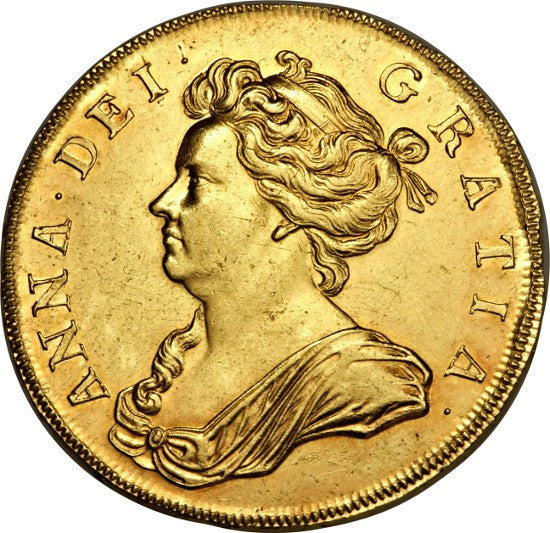 The coin's reverse was altered to reflect the union between Scotland and England - Image: Heritage Auctions |
In 1706, England and Scotland were united by the Treaty of Union, establishing the United Kingdom of Great Britain. With Queen Anne on the throne, it was decided that coins (which at the time showed the arms of England, Ireland, Scotland and France) should be revamped, with the arms on the shield changed to reflect the new state.
Due to the old-style calendar, coins dated 1706 appear with both designs today. One of the post-union coins, graded AU58, sold for $94,000 at Heritage Auctions in January 2014.
9. 1933 one penny - ?�80,000 ($134,400) (estimated value)
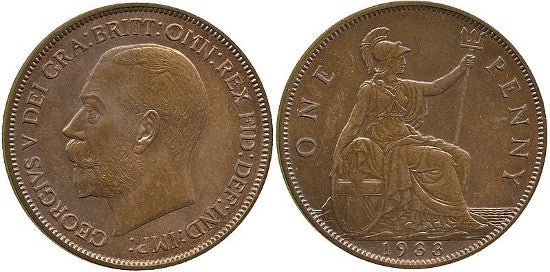 Just six or seven coins were produced, with some later stolen from the foundations of a church - Image: Wikimedia Commons |
If you're a British coin collector, chances are you've heard of the 1933 one penny, but never seen one. Minted under King George V, they are renowned as one of Britain's rarest regular issues.
Their rarity lies in the fact that, in 1933, banks in England possessed so many pennies that it was simply not necessary to strike any more. However, tradition dictated that a new penny would be placed under the foundation stone of new buildings, and the Mint was obliged to strike a scant few for this purpose.
No more than six or seven coins were produced, with three placed under buildings and the rest kept in the Mint's own collection. In the 1970s, it emerged that thieves had stolen the set of coins under the Church of St Cross near Leeds, and it was decided that the set that lies beneath the foundation of St Mary's Church should be removed for sale.
The auction, held with the blessing of the church's bishop, took place at Sotheby's in the 1970s, but it's not certain what the final price was. Today, the coin is estimated to be worth ?�80,000 if it ever appears for sale.
8. 1839 Victoria ?�5 - ?�83,638 ($141,000)
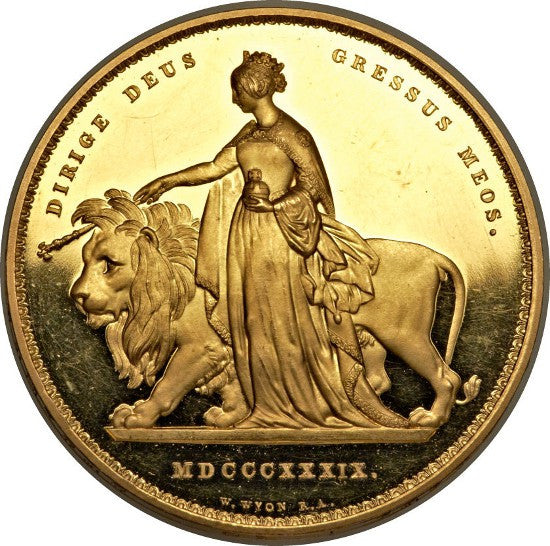 The 'Una & the Lion' design is considered one of the finest ever seen on a British coin - Image: Heritage Auctions |
"Her Finest Coin from Her Coronation Proof Set".
That's the title Heritage Auctions bestowed on the 1839 Queen Victoria I ?�5 coin that sold for $141,000 in its January 2014 auction.
Bearing the renowned "Una & the Lion" design on its reverse, the coin at Heritage is graded PR63 Ultra Cameo and barely has a scratch on its surface. Deemed the finest the cataloguer had seen in 40 years of handling British coins, it is considered one of the most beautiful British coins ever created.
7. George III 1819 sovereign - ?�186,000 ($288,765)
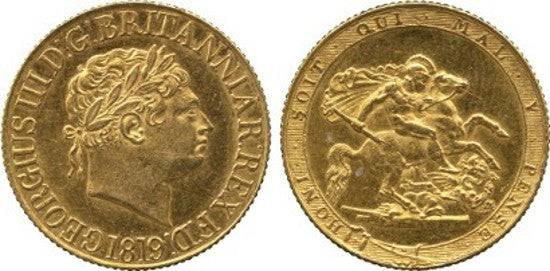 The George III sovereign was struck using gold supplied by private sources, rather than the Bank of England - Image: Spink |
Only 3,574 examples of the George III 1819 sovereign were ever struck, which is about a day's work for the Royal Mint. However, for unknown reasons, the coin was actually struck over five instalments from August to November 1819.
Even more unusually, the coins were struck not with gold supplied by the Bank of England, but from private sources, thought to have been firms in the City of London. They were put into circulation, but were already rare by 1821, when a survey showed that just two remained.
Today, it is thought that just 10 examples exist, making it one of the rarest of all British sovereigns. When Spink auctioned the renowned Bentley Collection in May 2013, its example sold for ?�186,000.
6. 1663 Charles II Petition crown - ?�207,000 ($130,872)
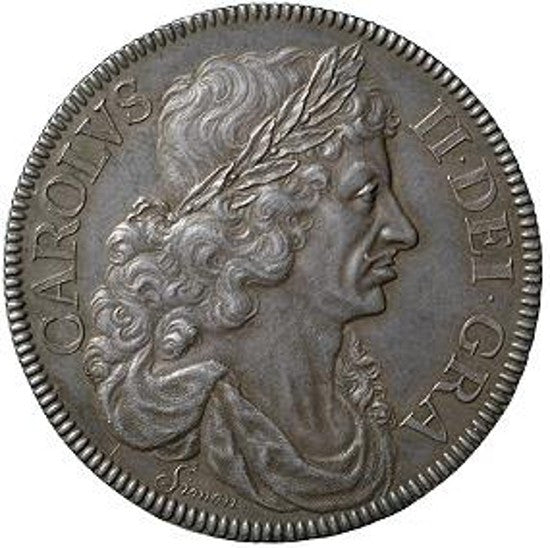 'THOMAS SIMON MOST HVMBLY PRAYS YOVR MAJESTY TO COMPARE THIS HIS TRYALL PIECE WITH THE DVTCH' - Image: Wikimedia Commons |
After King Charles II took the throne in 1660, it was clear that England needed new coinage to replace that used under Cromwellian rule. In 1663, English medallist Thomas Simon submitted this coin as a personal petition that his should be the new design.
It reads: "THOMAS SIMON MOST HVMBLY PRAYS YOVR MAJESTY TO COMPARE THIS HIS TRYALL PIECE WITH THE DVTCH AND IF MORE TRVLY DRAWN & EMBOSS'D MORE GRACE; FVLLY ORDER'D AND MORE ACCURATELY ENGRAVEN TO RELIEVE HIM."
Simon's petition came too late for Charles II to change his plans. However, it is considered one of the finest examples of coin engraving in British history.
An example sold at Spink in 2007 for ?�207,000.
5. 1642 Charles I Pattern Triple Unite - ?�241,500 ($407,362)
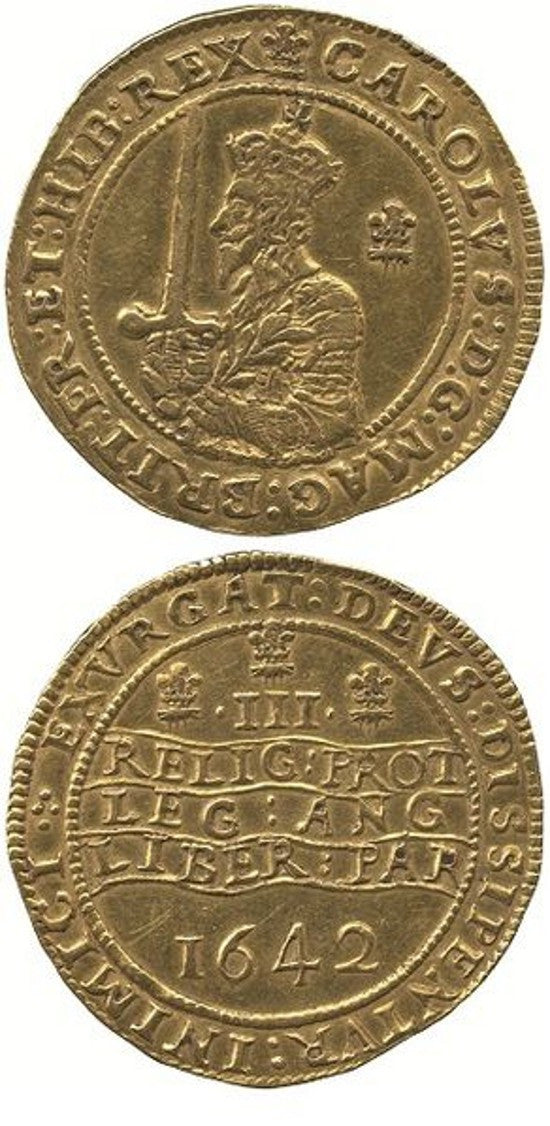 Charles I wished for peace in the English civil war, with the king shown holding both his sword and an olive branch - Image: Wikimedia Commons |
There is only one example of the Charles I Triple Unite, or Three Pound Piece. The highest denomination ever made during the hammered coinage period, it was only produced during the English civil war and shows Charles I with his sword and an olive branch - a symbol of his wish for peace, but preparedness to fight.
The coin is known as the Triple Unite due to its inscription, which reads: "The religion of the Protestants, the laws of England and the liberty of Parliament. Baldwin's sold the only extant example for ?�241,500 in September 2006.
4. 1703 Queen Anne Vigo five guinea - ?�296,160 ($498,991)
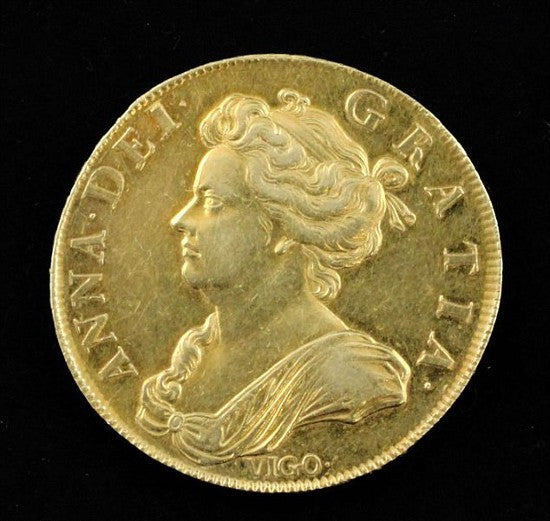 What better use for the spoils of war than the new coinage of a monarch? - Image: Gorringes |
In 1703, back when the British Navy roamed rampant across the seven seas, Queen Anne took to the throne. As for all new monarchs, a new coinage was due, but where would the gold come from? Cash-strapped Britain had spent much of its fortune waging wars across the continent.
Using gold captured from Spanish galleons at the Battle of Vigo Bay, the Royal Mint created the "Vigo" five-guinea piece in "remembrance of that glorious action". Considered one of the most exotic coins ever created in Britain, it exists in numbers lower than 25 today, with one selling for ?�296,160 at auction in 2012.
3. 1663 Charles II Reddite crown - ?�396,000 ($667,209)
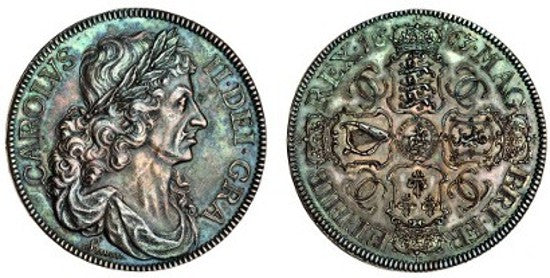 Thomas Simon finally saw his design in circulation, having submitted the Petition crown (above) too late for use - Image: Spink |
When Thomas Simon submitted the Petition crown (above), Charles II wo






